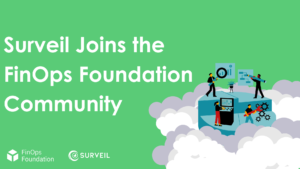With the growing dependence on cloud services for business infrastructure requirements, FinOps is used to being the darling of modern technology. But will AI – the new kid on the block – help or hinder the FinOps cause?
Need a reminder of what FinOps entails? Let’s refresh. FinOps – short for Financial Operations – is a structured approach to optimising an organisation’s cloud spend, without reducing service or quality. More than 60% of businesses worldwide have embraced the FinOps approach already, and industry experts anticipate widespread adoption within the next two to three years. Why? The most convincing reason would be the draw of cost saving and resource allocation – but every business has its own cloud objectives to consider.
Elsewhere, there’s another disruptive force to take note of: AI. Enjoying the spotlight for the second year, artificial intelligence has taken the crown to become the most-talked-about technology in the boardroom.
But rather than pit the two priorities together, is there a possibility where the reliable FinOps structure could benefit from a boost, courtesy of this younger, more influential new kid on the block?
How AI Can Boost FinOps
Although FinOps stands strong alone, undoubtedly championing the cloud optimisation cause, its potential is amplified when AI is added to the mix; after all, even Batman needs a helping hand sometimes. Leveraging AI-powered algorithms and predictive analytics, FinOps teams can expect better cost predictions, more efficient anomaly-spotting, and smarter optimisation suggestions.
Cost Savings – A Tangoe 2023 survey of 200 business IT decision-makers found that those businesses incorporating artificial intelligence (AI) into their financial operations (FinOps) workflows are 53% more likely to achieve cost savings exceeding 20%. AI can make sense of spending patterns and trends, and then predict future costs based on these insights. Meanwhile, allowing AI to identify underutilised business resources, allows teams to decide whether to keep those resources or allocate that money to another area that employees use more instead.
Spotting Anomalies – AI has the ability to spot cloud anomalies in real-time, catching any irregularities that might hike up costs. Implementing AI in FinOps will allow businesses to keep a constant eye on their financial data, promptly see any anomalies, and then push out alerts for instant action. This proactive approach helps to stay ahead of cost-related issues a lot quicker than usual.
Smarter Optimisation – AI helps with optimising employee time by automating routine tasks, such as sifting through mountains of data. With the help of AI, trends and correlations can not only be identified but also be used to create recommendations for cloud optimisation.
OK, we know that AI can help with speeding up projects, allowing employees to spend time on other tasks that aren’t as time consuming. But how does AI fit in with FinOps specifically?
FinOps Phases and AI
‘The FinOps Lifecycle’ is a model advised by the FinOps Foundation, which recommends an iterative approach to managing cloud costs. Comprising of 3 main phases, the lifecycle allows different parts of a business to be at various stages of the lifecycle at one time.
Inform – The first stage of the FinOps lifecycle focuses on empowering businesses by enhancing their visibility, budgeting, and forecasting capabilities. AI is the perfect tool to not only retrieve the correct data to enhance at this stage, but also analyse it to allow businesses to move to the next FinOps lifecycle stage. AI analytics are tailored for large-scale data processing, using predictive algorithms to understand company data. Real-time comparisons drive AI-generated recommendations for cost savings in the cloud, making this initial stage great to use AI as a helping hand.
Optimise – After the businesses are empowered, the next step is to optimise their cloud with the information retrieved from the ‘Inform’ stage. As mentioned earlier, AI can use automation to optimise accordingly from the data that it has received. By automating tasks involved with masses of data, employees are freed up to spend time on actioning insights, increasing overall optimisation and efficiency.
Operate – During the final stage, the main focus is on implementing ongoing organisational changes to operationalise FinOps, using findings taken from the Inform and Optimise phases. This involves setting up cloud governance policies, monitoring compliance, and empowering employees through training programmes, team guidelines, and automation policies aligned with business goals. As AI can learn continuously, it will adapt its suggestions with the more information it gets, making its business recommendations relevant to the current state of your organisation.
In answer to the question of whether FinOps can benefit from AI at its side, the evidence overwhelming suggests it can, empowering FinOps teams to make data-driven decisions and continuously optimise costs at a much more efficient rate. As AI technology continues to evolve, its role in FinOps will only grow – further proving they’re a match made in heaven.






